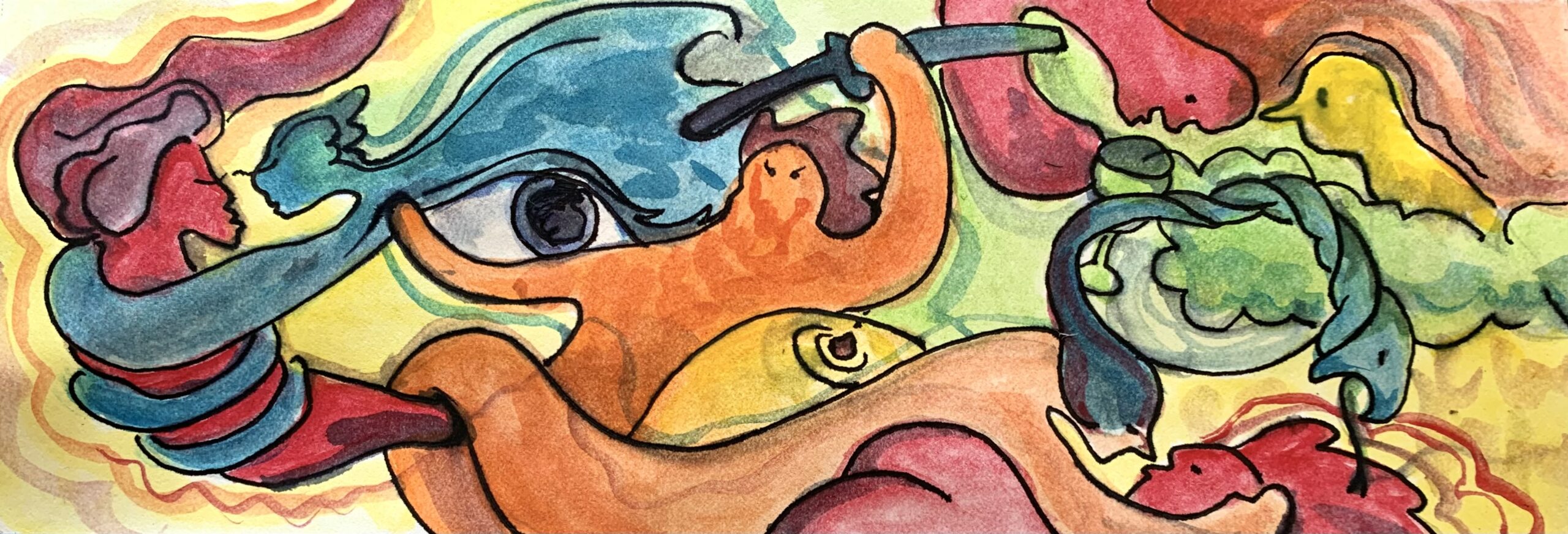Tuhin Bhattacharjee is a Ph.D. Candidate in Comparative Literature at New York University.
Last summer I offered a new course at New York University covering desire, sex, and seduction in the ancient world.
When I decided to include the Kamasutra in the syllabus, I recalled how, as a college student in India many moons ago, some friends and I had discreetly managed to buy an English translation of this notorious book. We wrapped its cover in newspaper and passed it to each other with teenage excitement while hidden in an empty classroom.
I also recalled—not without a chuckle—our collective disappointment upon turning its pages.
Out of the seven books of the Kamasutra, six turned out to have only tangential connections to sex: they were instead about the daily routines of courtesans and the urban elite, tricks to retain power in a marriage, the use of black magic to seduce or harm a rival, and so on. Only the second book was about the (in)famous—and largely fanciful—sexual positions (though not only about them) and that too in a rather dry and analytic prose.
As I prepared to teach my class, what amused me most was how ubiquitous the book’s name has become in Western pop culture, largely fueled by salacious misconceptions.
From massage parlors to restaurants, mattresses to contraceptives, wristwatches to alcohol brands, “Kamasutra” is all over hell’s half acre. It has been transformed into a codeword both for our fantasies of sexual indulgence and for the “sacred wisdom of the East.”

Consider, for instance, the film American Kamasutra (2018), a steamy (and cringe) erotic thriller or the Kamasutra wristwatch that displays a different sexual position for each hour.
These misconceptions, particularly the reduction of the Kamasutra to a “sex manual,” go back to the colonial reception of the book. India was under British rule in the 19th century, and colonial scholars from Victorian England were outraged by the Kamasutra’s brazen discussions of sexuality.
In the 21st century, especially during the sexual revolution of the 1960s and the 70s, the West rediscovered the book and celebrated its openness to all things sexual.
And yet, the Kamasutra, attributed to Vatsyayana, remains about so much more.
It provides fascinating, humorous, and sarcastic insights into the colorful lives of elite men and women—and their erotic and political (mis)adventures—in ancient India.
In fact, far from its popular citation as merely a “sex manual,” the Kamasutra recognizes, celebrates, and sometimes cautions us against the inescapable intimacy between desire and politics, between the bedroom and the state.
The Kamasutra was composed in a combination of Sanskrit verse and prose sometime in the 3rd century CE. Etymologically meaning a treatise (sutra) on pleasure/desire (kama), it is one of the oldest extant texts in the world on erotic love. Its original audience was primarily an urban elite possessing wealth, leisure time, and refined aesthetic sensibilities.
The Kamasutra represents the culmination of a long tradition of discourse on the art of loving and living well.
Ancient Indian thinkers believed human life had three major aims: righteousness (dharma), material success (artha), and pleasure or desire (kama).
Righteousness was recorded in law books like the Manu Smriti that were meant to instruct people on morality. The pursuit of success was deftly compiled in another text, Kautilya’s hugely influential Arthashastra (Treatise on Statecraft)—an enormous compendium of strategic advice for kings. The Kamasutra’s purpose, on the other hand, was to train its readers in the art of kama, of sensual, and not just sexual, indulgence.
The Kamasutra displays a keen awareness of its relationship with the two other aims of life, righteousness and success. Its attitude toward righteousness is rather complex: it often introduces a topic by deferring to the authority of the law-books, but then, almost invariably, veers toward an amoral, unromanticized interpretation of the world.
This is significant not only because it highlights the non-hegemonic nature of the Kamasutra, but also because it undercuts attempts by India’s current right-wing regime to paint ancient India as a pristine land of righteous men and women who always dutifully upheld the strictures and hierarchies of righteousness or dharma.
For example, consider the role of the go-between, a lower-caste woman who is supposed to proposition a man on behalf of her upper-caste woman friend. Instead of persuading the man to fall in love with her friend, she ends up seducing the man for herself. She, as a go-between, thus uses her access to the man to her advantage, effectively undermining the strictures of caste!
The men and women of the Kamasutra are intelligent, cunning, and guileful, a far cry from the prudish standards set by other ancient texts. They conspire to seduce their object of desire, win their lovers’ confidence, and outdo their rivals both in love and in politics.
The world of sex and the world of politics are never too far apart.
As Wendy Doniger demonstrates in Redeeming the Kamasutra (2016), it is from the Arthashastra that the Kamasutra receives its artful and political connivance.
The Arthashastra is a ruthless treatise that offers profound political and psychological insight into the minds of kings and administrators. Its author, Kautilya, has been described in the West as “the Machiavelli of India,” but as Doniger points out, the Arthashastra makes Machiavelli look like a pious saint!
It is impossible to appreciate the Kamasutra’s political underpinnings without analyzing its enormous influence from the Arthashastra. Whereas the Arthashastra lists the kinds of people in the enemy’s territory who are disappointed with their king and can therefore be more readily persuaded to be traitors, the Kamasutra gives a list of women who are more vulnerable to seduction, such as a woman who hates her husband or whose husband smells bad!
It is in the Kamasutra’s justification of adultery, however, that we see the influence of the Arthashastra at its clearest, as it sees the very essence of desire as a contest and shows how love is often a ruse for political gains.
To help us wrap our heads around this dynamic, let us name our potential male adulterer, Rahul. After telling us that adultery is a sin according to the law-books, Vatsyayana characteristically proceeds to describe, in a completely non-judgemental tone, several situations where adultery takes place.
Rahul may want to seduce another man’s wife if, for instance, her husband is friends with Rahul’s enemy, since the wife’s extra-marital love for Rahul might make her convince her husband to shift allegiances. Or, the husband may be rich, and his wife and Rahul may kill him together so as to access all his wealth.
Sex, after all, is never just about sex.
Desire, in the Kamasutra’s amoral worldview, is imbricated in layers of powerplay, seduction, precarity.
The line between the erotic and the political is a fuzzy one indeed. The way to navigate this dark, labyrinthine territory, the Kamasutra suggests, is not to deny the challenge but to embrace its destabilizing force, grapple with its contradictions, and then, only then, to master it. There are rules to this game and this treatise is at best a guide to playing it well.
And yet, the Kamasutra has no hesitation in admitting—in a refrain that holds the book together—that these rules work only up to a point:
For prescriptions are relevant only
till men’s feelings dull remain.
Once the wheel of bliss erotic
is in motion, there is neither
prescription nor any order. (trans. A. N. D. Haksar)
As these verses indicate, in the overpowering madness that takes over our bodies and souls in the vertiginous throes of passion, no textbook—not even the Kamasutra itself—is of any use.
Tuhin Bhattacharjee is a Ph.D. Candidate in Comparative Literature at New York University.
Art by Michelle Huang. Michelle read this piece and designed an original painting for Conceptions Review. Michelle is an artist from Sugar Land, Texas, now based out of New York, New York. She specializes in oil painting, known for her expressionist style in both figurative and abstract work. Her website is https://mhuangart.com.
Launched in March 2021, Conceptions Review is interested in the ideas people have about society and the consequences of these ideas. We seek accessible and standalone articles about conception-bending ideas and popular misconceptions. We are open to fields ranging from musicology to history to mathematics to insectology and everything in between.


